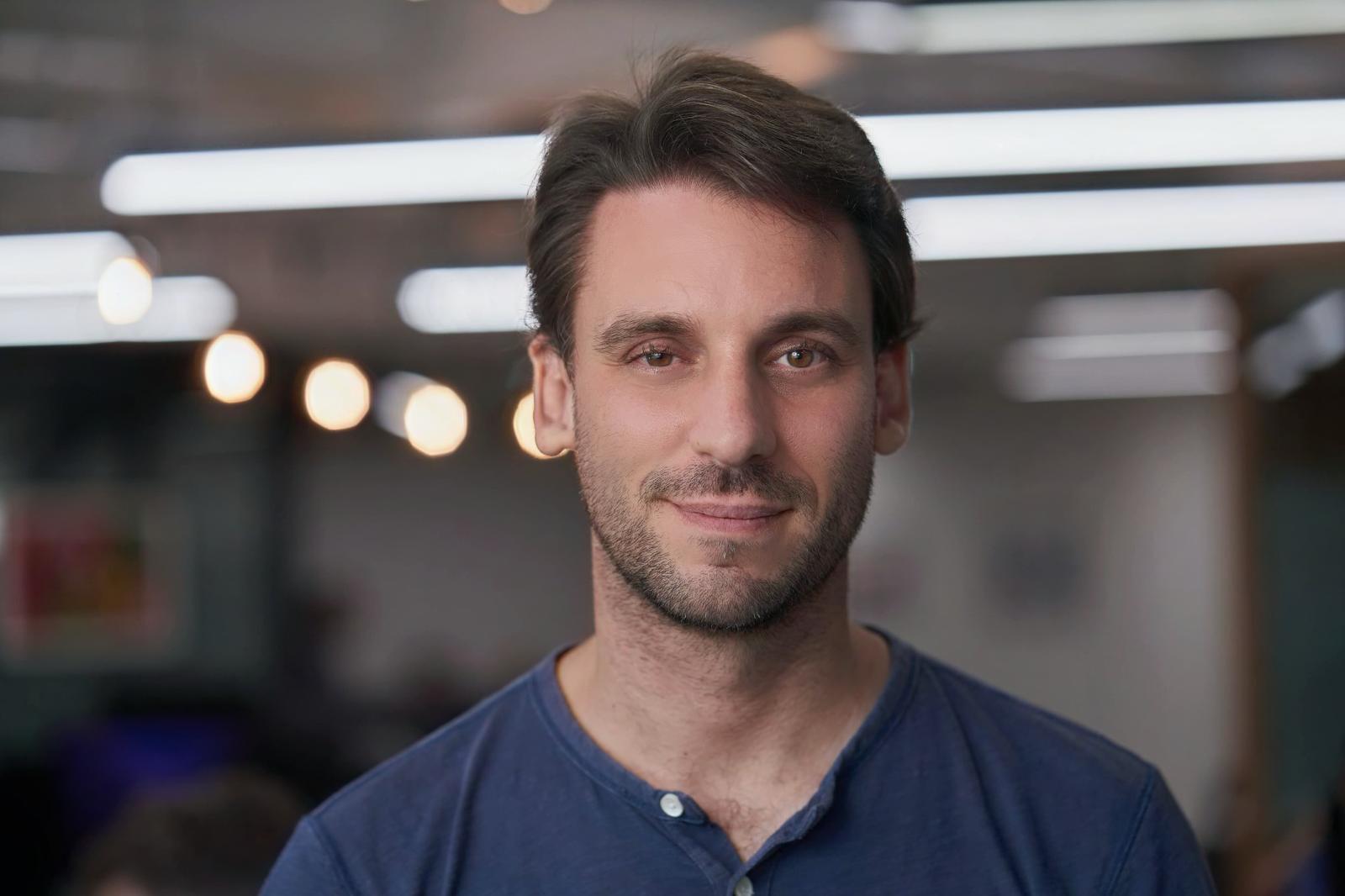Interviews
Ben Chevalier, Co-founder and Chief AI Officer at GOAT Gaming – Interview Series

Ben Chevalier, Co-founder and Chief AI Officer at GOAT Gaming, brings more than two decades of experience at industry giants like King, LucasArts, and Ubisoft to his role leading one of the fastest-growing Telegram gaming platforms with over 6 million users. Today, he is driving GOAT’s transformation into an AI-native game studio, where his team has cut development time by up to 80% through AI agents and achieved 95% AI-generated content across visuals and gameplay. Under his leadership, GOAT is pioneering the Social Arcade, enabling players to compete and creators to build new games with natural language.
With over two decades in the gaming industry, including time at King, LucasArts, and Ubisoft, what initially drew you to the world of gaming, and how did your experiences at these companies shape your approach to game development?
I’ve been in games for over 20 years, and my time at King, LucasArts, and Ubisoft each taught me different things, but the big throughline was how to ship great games at scale without losing the magic.
Those experiences proved that the best games happen when top-tier creative talent and rock-solid production processes work in sync. That’s the same approach we use at GOAT Gaming, only now, we’ve layered AI into everything. We can take a crazy idea on Monday and have it live for millions of players by Friday. That mindset comes straight from those early lessons.
Having built a successful career in the gaming industry, what motivated you to co-found GOAT Gaming, and how did you envision leveraging AI to transform the gaming experience?
Co-founding GOAT Gaming was a timing thing. AI wasn’t just “the next tool” but the platform shift I’d been waiting for. We decided early on to go all-in and become an AI-native studio. That meant rebuilding how we make games from the ground up.
My vision was to empower every team member, regardless of technical background, to design and deploy intelligent systems. Now every person on the team from artists to marketers can spin up game logic, visuals, or events using AI without getting caught in bottlenecks. We run R&D and production side by side, and we’ve built autonomous agents like AMY who can host tournaments, manage communities, and even monetize inside chat. Yes, it’s 5–10x faster, but the real win is we can try way more ideas, keep what works, and toss what doesn’t.
Can you explain what GOAT Gaming is all about? How does it stand out from other gaming platforms, and what makes it unique in the industry?
GOAT Gaming is a Telegram-based gaming platform built for speed, accessibility, and community. There’s no download, no sign-up, you just open a chat with our @goatgamingbot and you’re playing. That frictionless experience is a big part of why we’ve grown from a small experiment in mid-2024 to over 6 million users today. Think of GOAT Gaming as the platform and app, but AMY is the next iteration of the ecosystem and will take over as the platform.
What makes us stand out is that we’re fully AI-native. 95% percent of our content: game logic, visuals, story is AI-generated. We’ve re-engineered our production pipeline so our team can ship new games, run live events, and even deploy autonomous agents like AMY, who can host tournaments, manage rewards, and make chats feel alive. In the next three months, we will be able to ship two titles per week.
Most platforms focus on delivering games. We’re building something bigger, a programmable engagement layer where games, community interaction, and monetization happen in the same place, in real time, without pulling players out of the experience.
What kind of games are featured on GOAT Gaming? Are there specific genres or gameplay styles that the platform focuses on, and how do you see AI enhancing the gaming experience for players?
We’ve got a pretty wild mix on GOAT Gaming. One day you might be merging turrets and fending off waves of enemies in GOAT Wars, the next you’re in a head-to-head solitaire match with a smug cartoon cat staring you down. Our newest title is Underground Pepe, a fast-paced idle clicker game with a mafia twist.
The common thread is they’re all fast to learn, fun to master, and built to fit right inside Telegram: no downloads, no waiting around. And because 95% of what we make is AI-generated, we can keep things fresh constantly.. AI lets us react in real time to how people are playing, so the platform never feels static.
You surpassed its goal of 50% AI-generated content by reaching 95% AI-powered content in May. What were some of the key milestones that helped you reach this achievement, and how has AI influenced everything from visuals to gameplay logic?
When we set that 50% target, it felt ambitious. Hitting 95% came from a few big shifts. First, we made AI fluency a baseline skill for everyone. It didn’t matter if you were an artist, a designer, or in marketing, you were expected to be able to build and deploy AI tools. That broke a lot of the traditional bottlenecks.
Then we built our own internal stack: bots, pipelines, and workflows, so non-technical folks could create playable prototypes or ship marketing assets in hours instead of days. And the final leap was deploying autonomous agents, like AMY, that can manage events, track player behavior, and handle rewards without a human in the loop.
The impact’s been across the board, visuals, story, even gameplay logic are now AI-generated. We can spin up a character pack in a fraction of the time, tweak balance dynamically, or drop a new live event overnight.
GOAT Gaming leverages Telegram as a platform for gaming. What prompted you to choose Telegram over other platforms, and how has this decision contributed to GOAT Gaming’s rapid growth?
Telegram gives us a unique opportunity to rethink how games are distributed, played, and socialized. It’s one of the largest messaging platforms in the world, with over 1B users globally. By building directly inside Telegram, we can remove a lot of traditional barriers to gaming. There are no downloads, no installs, instant access with a single tap. We focus on fast, fun, competitive experiences that fit naturally into how people already use Telegram. Ultimately, we see Telegram not just as a platform, but as a new kind of distribution channel for gaming.
This approach also keeps us on the edge of what’s next in gaming. Think back to when free-to-play or browser games were written off as fads yet they ended up reshaping the whole industry. We see Telegram the same way. It’s the next frontier for accessibility and distribution. Plus, it’s huge for reaching players in emerging markets who might not have high-end gaming hardware. By leaning into Telegram now, we’re doing what we’ve always done and jumping onto new platforms early and making sure more people, everywhere, can play great games.
Finally, Telegram is uniquely crypto-native, with built-in support for the TON blockchain, and as a blockchain project, that makes it the perfect platform for us. The launch of Telegram Gifts, spanning both off-chain and on-chain collectibles, has exploded in popularity, pushing TON to the #1 spot globally in daily NFT volumes. With Snoop Dogg as a major Gifts ambassador, the feature has captured mainstream attention. For us, Gifts are the foundation for new experiences like in Underground Pepe, where collectibles power core game infrastructure and unlock entirely new ways to play.
With the growing integration of cryptocurrency in gaming, how does GOAT Gaming incorporate crypto into the platform? Can you explain how crypto elements enhance the gaming and user experience?
Crypto is baked into AMY, but in a way that feels natural to the experience. We use it for things like real-money prize pools, on-chain collectibles, and player-to-player trading. When you earn raffle tickets in GOAT Wars or win Crowns in Kitty Solitaire, those can connect directly into wallet-based rewards.
Because it’s all happening inside Telegram, there’s no app-hopping. You can play, win, and claim without leaving the chat. That’s a big part of why we see such high wallet connection rates; in some events, over 50% of players link up to participate, which is way above the industry norm.
The crypto layer adds a sense of real ownership and stakes. Players know their wins aren’t just points on a leaderboard, they’re assets they can keep, trade, or use in future events. It turns a quick game session into something that has lasting value, and it makes the whole ecosystem feel more like a living economy than a closed-off game.
As AI continues to influence game design, what are some of the most exciting AI-driven features that players can expect in future releases from GOAT Gaming?
The most exciting part is that AI isn’t just making our games faster to build, it’s opening up entirely new ways to play. In the near term, you’ll see more autonomous agents like AMY that can run tournaments, adapt difficulty on the fly, and make each player’s experience feel personal.
We’re also working on deeper persistence, agents that remember how you play, what you like, and can carry that across multiple games. Think of it as your gaming identity traveling with you through the platform, evolving over time.
And because we can now spin up new content in days instead of months, we can experiment with event-driven gameplay that reacts to the community in real time. If something blows up in chat, we can turn it into a live game loop that same week. The endgame is a platform that feels alive, where AI is not just behind the scenes, but part of the experience every time you log in.
Looking back at your journey in the gaming industry, what experiences shaped your passion for gaming, and how has that shaped the way you approach game development today?
I’ve been lucky to work in gaming for over two decades and every stop along the way has shaped how I think about building games. Working with companies like King, LucasArts and Ubisoft taught me the value of pairing strong creative vision with scalable production. You learn success comes from teams that can execute consistently at a high level, whether you’re making a family-friendly Disney brawler or a fast-paced mobile hit.
That foundation is what made our AI-native shift possible. I’ve always believed in embracing new platforms and tech early, but AI took that to another level. It’s not just about making production faster, it’s about giving teams the tools to experiment more, take risks, and deliver experiences that feel alive. The mindset I bring every day is to combine veteran creative instincts with the newest tech and never stop iterating.
Thank you for the great interview, readers who wish to learn more should visit GOAT Gaming.











